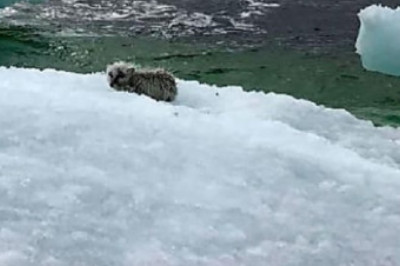The Startling Truth: Decapitated Snakes Can Still Pose a Deadly Risk
The notion that decapitated snakes have the ability to bite and potentially inflict harm even after death may sound like a scene straight out of a horror movie. However, this startling phenomenon holds a significant basis in reality, as experts have shed light on the complex mechanisms that allow decapitated snakes to retain their danger long after their demise.

At the core of this chilling revelation lies the intricate biology of snakes and the unique characteristics of their venom delivery system. When a snake strikes and injects its venom into its prey, compression muscles work in unison to squeeze a venom gland in its cheek, propelling the toxic substance through a duct and into the victim like a syringe in action.
Despite the cessation of vital functions such as heartbeat and respiration following decapitation, snakes possess a remarkable capacity for post-mortem reflexes, as explained by snake expert Christina Zdenek from the University of Queensland. These reptiles, known for their energy-efficient nature and minimal oxygen requirements, can maintain a level of oxygen in their tissues even after death, enabling nerve firing and triggering reflex actions such as biting.
One of the chilling experiments carried out by American herpetologist Laurence Klauber in the mid-1900s stands as a testament to the enduring threat posed by decapitated snakes. By decapitating live snakes and observing their behavior post-mortem, Klauber discovered that these creatures could still deliver a bite capable of injecting venom even after their demise. In a particularly alarming case, a snake managed to inflict a powerful bite 43 minutes after death, underscoring the persistent danger that decapitated snakes can pose.
The longevity of a snake's dangerous potential extends beyond its immediate demise, with certain snake toxins retaining their potency for extended periods. A harrowing incident from the 1980s serves as a stark reminder of this reality, as a young man experienced the toxic effects of a dead rattlesnake that had been preserved for over seven weeks. Despite the snake being frozen, salt-preserved, and glycerin-dipped, residual poison from the fang managed to enter the man's body during a brief contact, causing alarming symptoms including dizziness, weakness, swelling, and numbness.
In light of the lingering threat posed by dead snakes, experts emphasize the importance of exercising caution and avoiding handling deceased serpents whenever possible. Should interaction with dead snakes be unavoidable, maintaining a safe distance and refraining from contact with vulnerable areas such as open wounds becomes paramount to mitigating the risk of exposure to potentially life-threatening toxins.
The eerie reality of decapitated snakes retaining their ability to bite and inject venom serves as a stark reminder of the intricacies of nature and the unforeseen dangers that can lurk even in seemingly lifeless creatures. By gaining a deeper understanding of these phenomena and adhering to safety precautions, individuals can navigate the complexities of interactions with snakes, living or deceased, with heightened awareness and caution, safeguarding against unforeseen risks and potential harm.






















Comments
0 comment